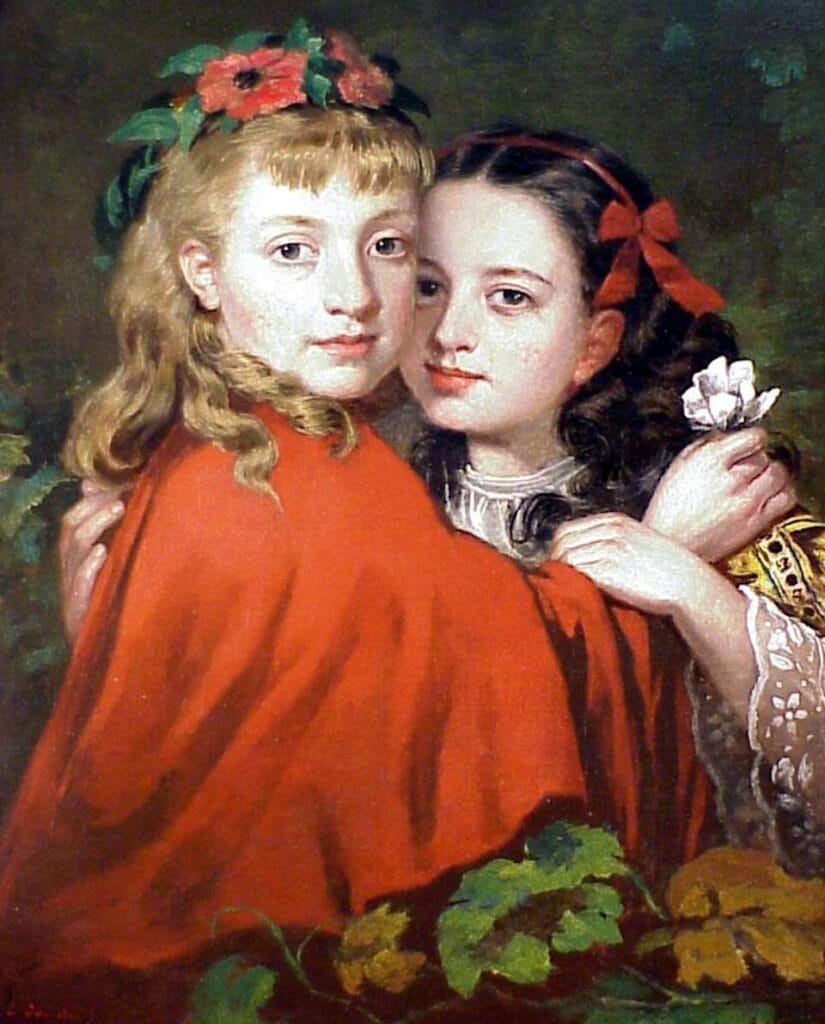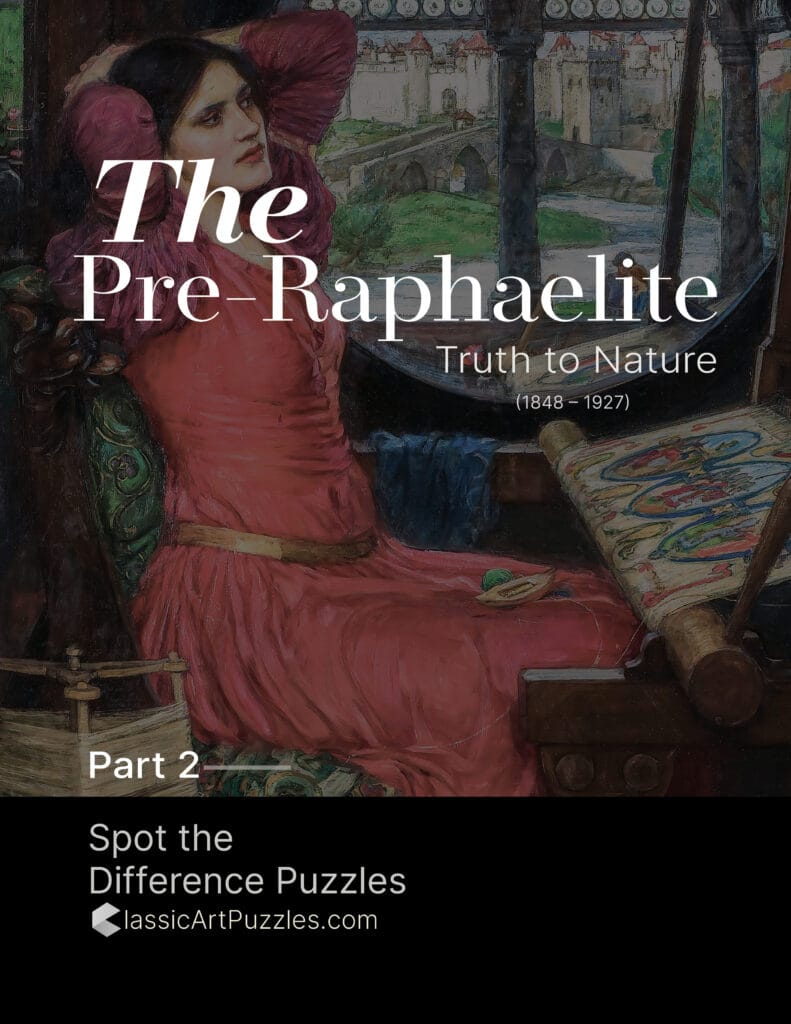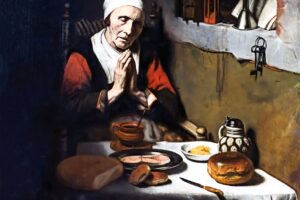Table of Contents
Overview
Painted around 1863 by James Collinson (1825–1881), Too Hot captures a quiet domestic moment infused with warmth, humor, and familial affection. A grandfather carefully cools a spoonful of soup for the young girl perched on his knee, while she leans forward, eager yet cautious. The title suggests both the literal temperature of the food and the gentle lesson of patience unfolding in the scene.
Though simple at first glance, the composition reveals layers of meaning: intergenerational care, the ritual of meals, and the Victorian celebration of home as a moral anchor. The surrounding details — crockery on the shelves, a cat lapping milk in the corner, and the glow of everyday life — heighten the intimacy.
Collinson, once a member of the Pre-Raphaelite Brotherhood, brought the same attention to natural detail and narrative expression into his genre works. Too Hot stands as a heartfelt example of Victorian domestic painting, where ordinary life is given dignity and grace.
About the Artist
James Collinson (1825–1881) was an original member of the Pre-Raphaelite Brotherhood, though he later distanced himself for religious reasons. His art ranged from religious themes to moral narratives and sentimental domestic scenes. Collinson’s works often emphasized sincerity, faith, and everyday virtue, aligning with the Victorian ideal of art as both beautiful and instructive.

The Story Behind the Painting
A Domestic Narrative
At its heart, Too Hot is a story of family care. The older man protects the child from harm, cooling her food, while she watches attentively. Their bond is expressed not only in gesture but also in proximity, with the child resting securely on his lap.
Everyday Symbolism
The kitchen setting anchors the painting in reality. Each object — from the dishes on the dresser to the bread on the table — reinforces the theme of nourishment and sustenance. The cat, quietly enjoying its own meal, mirrors the theme of shared domestic life.
Victorian Values
For Victorian audiences, such scenes conveyed moral lessons: patience, intergenerational wisdom, and the sanctity of home. Collinson’s skill lies in presenting these values through genuine warmth rather than stiff formality.
Composition and Subjects
The Figures
- The Grandfather: A figure of care and authority, he models patience and attentiveness.
- The Child: Her small body leans forward in trust, embodying innocence and eagerness.
Domestic Details
The tiled floor, crockery, and tablecloth transform the scene into a vivid record of Victorian domestic interiors. Each detail serves to make the moment believable and relatable.
The Cat
In the lower right corner, the cat quietly drinking milk provides comic relief and balance, a small parallel narrative within the whole composition.
Art Style and Techniques
Pre-Raphaelite Influence
Although no longer fully engaged with the Brotherhood by the 1860s, Collinson retained its hallmarks: meticulous observation, luminous color, and moral storytelling.
Genre Painting
Too Hot belongs to the genre painting tradition, popular in Victorian England, where artists depicted everyday life with warmth and sentiment, offering both entertainment and moral reinforcement.
Use of Color
Warm tones dominate — the earthy tiles, the soft glow of the child’s dress, and the rich textures of the grandfather’s clothing all contribute to a harmonious domestic palette.
Featured in Our Collection
Too Hot is part of our Genre Painting Spot-the-Difference Puzzle Flipbook P2. Its fine details — from the child’s cautious glance to the cat’s quiet meal — provide rich opportunities for puzzle play. By engaging with this scene, players not only sharpen their focus but also immerse themselves in Victorian domestic storytelling.
A Grandfather’s Care
An elderly hand cooling soup, a child leaning in trust, and a cat quietly drinking nearby. In Collinson’s Too Hot, the simple warmth of home becomes timeless art.




